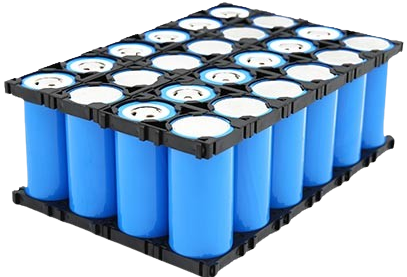.jpg)
In today’s digital and electrified world, lithium-ion batteries have emerged as the backbone of portable energy. From smartphones and laptops to electric vehicles (EVs) and renewable energy storage systems, lithium-ion batteries power many of the devices and technologies we rely on daily. Their compact size, high energy density, long lifespan, and fast charging capability have made them the preferred energy storage solution for both consumers and industries.
A lithium-ion battery (Li-ion battery) is a type of rechargeable battery in which lithium ions move from the negative electrode (anode) to the positive electrode (cathode) during discharge, and back when charging. These batteries use a lithium-based compound as the cathode and graphite or other carbon materials as the anode. A liquid or gel electrolyte allows for the movement of ions, and a separator keeps the electrodes apart to avoid short circuits.
Unlike older technologies like nickel-cadmium (NiCd) or lead-acid batteries, lithium-ion batteries are lightweight, have a higher energy-to-weight ratio, and do not suffer from memory effect (where battery capacity decreases due to partial charging).

| Brand | Wolta Power System |
| Rated Capacity | 6/12/18/24/30/36/42/48/54Ah |
| Nominal Voltage | 12.8V |
| Max Charge Voltage | 14.6V |
| Charging Current | ?? |
| Discharge Cut Off Voltage | 10V |
| Cycle Life | >2000 Discharge Rate- >3% |
Lithium-ion batteries offer significantly higher energy density compared to other rechargeable batteries. This means they can store more energy in a compact form, making them ideal for applications where space and weight are limited—such as smartphones, drones, or electric bikes.
A typical lithium-ion battery can handle 300 to 500 charge cycles before its capacity starts to degrade significantly. With proper battery management systems (BMS), some can last for up to 1,000 cycles or more, ensuring years of reliable use.
One of the standout features of lithium-ion technology is its low self-discharge rate. Unlike NiCd batteries, which lose about 10% of their charge per month, lithium-ion batteries lose only about 1.5–2%, making them ideal for standby or backup power systems.
Modern lithium-ion batteries support fast charging, allowing devices to reach 80% capacity in under an hour. This has significantly improved the convenience of using electric vehicles and portable electronics.
Li-ion batteries require no scheduled cycling to maintain battery life. This ease of use and maintenance-free operation make them highly desirable for both personal and commercial use.
Lithium-ion batteries are the heart of modern electronics—powering mobile phones, tablets, smartwatches, wireless earbuds, and laptops. Their ability to hold charge for long durations and fit into compact spaces makes them indispensable.
The electric vehicle revolution is being driven largely by advances in lithium-ion battery technology. EVs like those from Tesla, BYD, and Tata Motors use Li-ion battery packs for propulsion due to their high energy density and fast-charging ability.
Solar and wind power systems generate energy intermittently, so lithium-ion batteries are used to store excess energy for use during night-time or low production periods. They play a crucial role in microgrids and off-grid installations.
Medical equipment such as pacemakers, hearing aids, infusion pumps, and portable imaging devices often rely on lithium-ion batteries for reliable and long-lasting power.
From heavy machinery and robots to satellites and aircraft systems, lithium-ion batteries are used in various industrial and aerospace applications where reliable and lightweight power is essential.
While lithium-ion batteries are generally safe, they must be manufactured, used, and disposed of carefully. Overheating, overcharging, or physical damage can cause battery swelling, leakage, or even fire. That's why safety mechanisms like thermal management systems, battery management software, and protective casing are standard in modern lithium-ion battery packs.
Additionally, sourcing raw materials like lithium, cobalt, and nickel poses ethical and environmental concerns. Manufacturers are now shifting toward sustainable mining practices and exploring recycling and second-life applications to reduce the impact.
Research and development in the battery sector are accelerating at a rapid pace. Innovations such as solid-state lithium batteries, lithium-sulfur batteries, and silicon anode batteries promise to enhance safety, increase energy density, and reduce costs even further.
Governments and industries across the globe are investing heavily in battery technologies to support clean energy initiatives, electric transportation, and smart cities. With advances in material science and production efficiency, lithium-ion batteries are set to become even more powerful, affordable, and sustainable in the coming years.
Lithium-ion batteries have revolutionized the way we store and use energy. Their unique blend of performance, portability, and efficiency makes them a cornerstone of modern technology and a key enabler of a greener future. As we continue to push boundaries in electric mobility, renewable energy, and portable electronics, lithium-ion batteries will remain a vital part of powering the world—safely, efficiently, and sustainably.























